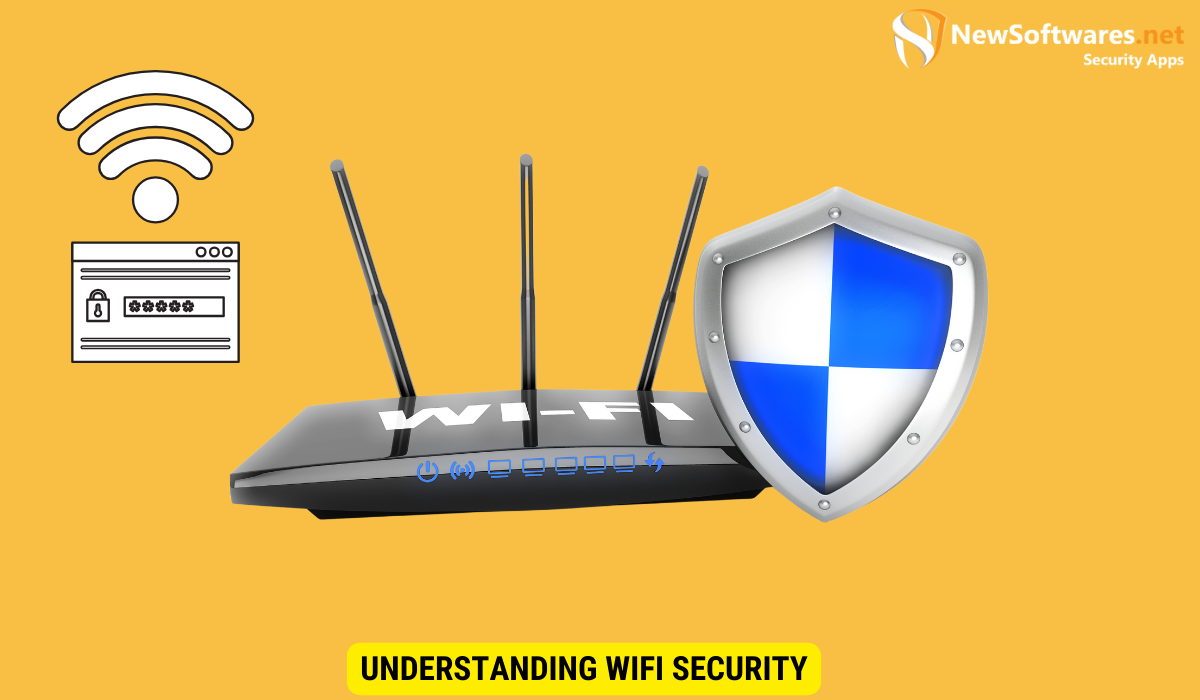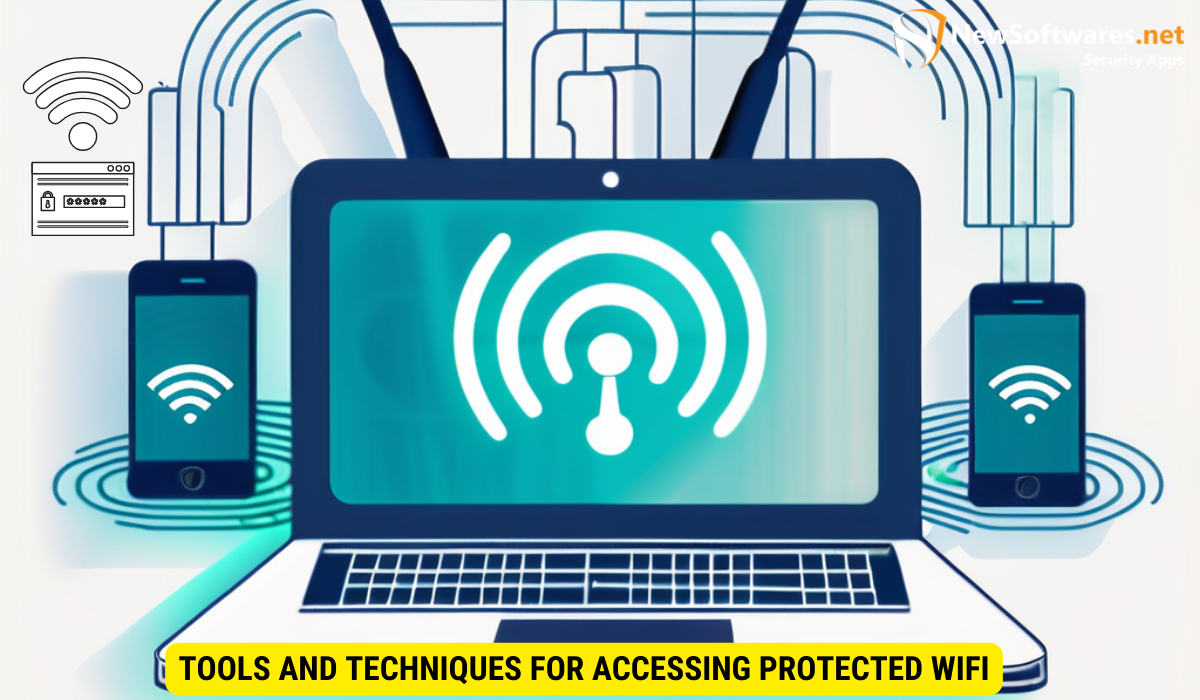To access password-protected WiFi, seek permission, use public hotspots, or employ legal methods.
In today’s digital age, staying connected is essential. Whether you’re at home, in a coffee shop, or on the go, having access to WiFi is a necessity. However, accessing password-protected WiFi networks can sometimes be challenging. I will explore the various aspects of WiFi security, legal and ethical considerations, tools and techniques for accessing protected WiFi, steps to access password-protected WiFi, and how to protect your own WiFi network. So let’s dive in!
Understanding WiFi Security

The Basics of WiFi Encryption
WiFi encryption is the process of encoding information transmitted over a wireless network. The most common forms of encryption are WEP (Wired Equivalent Privacy), WPA (WiFi Protected Access), and WPA2. These encryption methods ensure that your data is secure and cannot be easily intercepted by unauthorized individuals.
WEP, the oldest encryption standard, is now considered weak and easily crackable due to vulnerabilities in its design. WPA was introduced as a more secure alternative, but it also has known vulnerabilities. WPA2 is currently the most secure option, providing stronger encryption algorithms and better protection against attacks.
The Importance of Password Protection
Password protection plays a vital role in maintaining the security of a WiFi network. When you secure your WiFi network with a strong password, you prevent unauthorized users from gaining access to your network and potentially compromising your privacy and sensitive information.
It is essential to choose a complex and unique password for your WiFi network to enhance security. Avoid using common passwords like “password” or “123456” as they are easily guessable. A strong password should include a mix of uppercase and lowercase letters, numbers, and special characters. Regularly updating your WiFi password can also help prevent unauthorized access and keep your network secure.
Legal and Ethical Considerations
The Legality of Accessing Protected WiFi
It’s crucial to understand the legal implications of accessing password-protected WiFi networks without permission. In many jurisdictions, accessing someone else’s WiFi network without consent is considered illegal and can result in severe penalties. It’s always best to obtain explicit permission before connecting to a protected network.
Furthermore, unauthorized access to a protected WiFi network can lead to potential legal consequences beyond just violating privacy laws. Depending on the circumstances, it may be considered a form of cybercrime, punishable by fines or even imprisonment. To avoid legal trouble, it’s advisable to always seek permission before using any WiFi network that is not your own.
Ethical Implications and Responsibilities
Even if accessing password-protected WiFi networks is legally permissible in your jurisdiction, it’s essential to consider the ethical implications. Always remember that using someone else’s WiFi without permission is not only a breach of trust but also a violation of their privacy. Respecting others’ boundaries and seeking permission is the responsible and ethical thing to do.
Moreover, from an ethical standpoint, unauthorized access to a protected WiFi network can be seen as a form of digital trespassing. Just as you wouldn’t enter someone’s home without their consent, connecting to their WiFi network without permission is an intrusion into their personal space. Practicing good digital etiquette and respecting others’ property, including their digital assets, is key to fostering a culture of trust and mutual respect in the online world.
Tools and Techniques for Accessing Protected WiFi

Software Tools for WiFi Access
Various software tools are available that can assist in accessing password-protected WiFi networks. These tools utilize advanced algorithms and techniques to crack encryption codes and gain access to protected networks. However, it’s important to note that using such tools may be illegal and unethical in many circumstances.
One popular software tool used for accessing protected WiFi networks is Aircrack-ng. This tool is capable of performing packet sniffing, network scanning, and password cracking to break into secured WiFi connections. While it can be a powerful tool for network security professionals testing the strength of their own networks, using it for unauthorized access is a violation of privacy laws and can lead to criminal charges.
Hardware Devices for WiFi Access
In addition to software tools, certain hardware devices, such as WiFi adapters, can be used to connect to password-protected WiFi networks. These devices bypass encryption codes and provide unauthorized access to protected networks. However, similar to software tools, using hardware devices for this purpose is often against the law and can have severe consequences.
One example of a hardware device commonly used for unauthorized WiFi access is the WiFi Pineapple. This compact device is designed for penetration testing and can intercept WiFi traffic, perform man-in-the-middle attacks, and exploit vulnerabilities in wireless networks. While it can be a valuable tool for cybersecurity professionals conducting ethical hacking assessments, using it for illegal activities is strictly prohibited and can result in legal repercussions.
Steps to Access Password Protected WiFi
Scanning for Available Networks
When attempting to access password-protected WiFi, the first step is to scan for available networks in your vicinity. This can usually be done through the WiFi settings on your device or by using specific software applications designed for this purpose. It’s important to note that accessing WiFi networks without permission is a violation of privacy and can have legal consequences. Always ensure you have the necessary authorization before connecting to a network.
Once you’ve identified the network you want to connect to, it’s time to move on to the next step. Keep in mind that some networks may not be visible through a regular scan, as they might be hidden or have advanced security measures in place. In such cases, you may need to employ more sophisticated techniques to detect and access these networks.
Using Tools to Access WiFi
If you’re determined to access a password-protected WiFi network without permission, you may choose to utilize software tools or hardware devices. However, remember that these methods may be illegal and unethical. It is always better to seek permission or find alternatives such as public WiFi hotspots or mobile data plans. Engaging in unauthorized access to networks can not only lead to legal trouble but also compromise your own cybersecurity.
There are legitimate reasons for wanting to access password-protected WiFi, such as troubleshooting network connectivity or conducting security assessments with proper authorization. In such cases, it’s essential to follow ethical guidelines and respect the boundaries set by network owners. By obtaining explicit permission and adhering to responsible practices, you can ensure a safe and lawful approach to accessing WiFi networks.
Protecting Your Own WiFi Network
Setting Up a Strong Password
As a responsible WiFi network owner, one of your primary responsibilities is to secure your network with a strong, unique password. Avoid using common or easily guessable passwords and opt for a combination of letters, numbers, and special characters. Regularly change your password to enhance security and minimize the risk of unauthorized access.
Regularly Updating Your WiFi Security
Keeping your WiFi security up-to-date is crucial in defending against potential threats. Regularly update your router’s firmware and install any security patches or updates as soon as they become available. This helps ensure that your network is equipped with the latest security measures and safeguards against emerging vulnerabilities.
Key Takeaways
- WiFi encryption is vital for maintaining the security and privacy of your wireless network.
- Accessing password-protected WiFi networks without permission is often illegal and unethical.
- Software tools and hardware devices exist to bypass WiFi security, but using them can have severe consequences.
- Protect your own WiFi network by setting up a strong password and regularly updating your security measures.
- Always seek permission or explore legal alternatives when accessing WiFi networks.
FAQs
1. Is it legal to access password-protected WiFi networks without permission?
Accessing password-protected WiFi networks without permission is generally illegal and can result in severe penalties in many jurisdictions. It’s crucial to respect the boundaries of others and seek permission before connecting to a protected network.
2. Can I use software tools or hardware devices to access password-protected WiFi networks?
While software tools and hardware devices exist that can help access password-protected WiFi networks, using them is often against the law and can have serious consequences. It is always recommended to seek permission or explore legal alternatives.
3. How can I protect my own WiFi network from unauthorized access?
To protect your own WiFi network, set up a strong, unique password and regularly update your security measures. This includes changing your password periodically, updating your router’s firmware, and installing security patches or updates.
4. Are public WiFi hotspots a safe alternative to accessing password-protected networks?
While public WiFi hotspots can provide convenient internet access, they may not always be secure. Exercise caution when using public WiFi and avoid transmitting sensitive information when connected to these networks.
5. Is it possible to access WiFi without using password-protected networks?
Yes, there are alternative connectivity options available that do not require accessing password-protected WiFi networks. These include public WiFi hotspots, mobile data plans, or wired connections.
Conclusion
In conclusion, while accessing password-protected WiFi networks may seem enticing, it is important to consider the legal and ethical implications. Seeking permission, utilizing public WiFi hotspots, or opting for alternative connectivity options are always better choices than resorting to potentially illegal or unethical methods. Remember, it’s essential to respect the boundaries of others and protect your own network with robust security measures.
